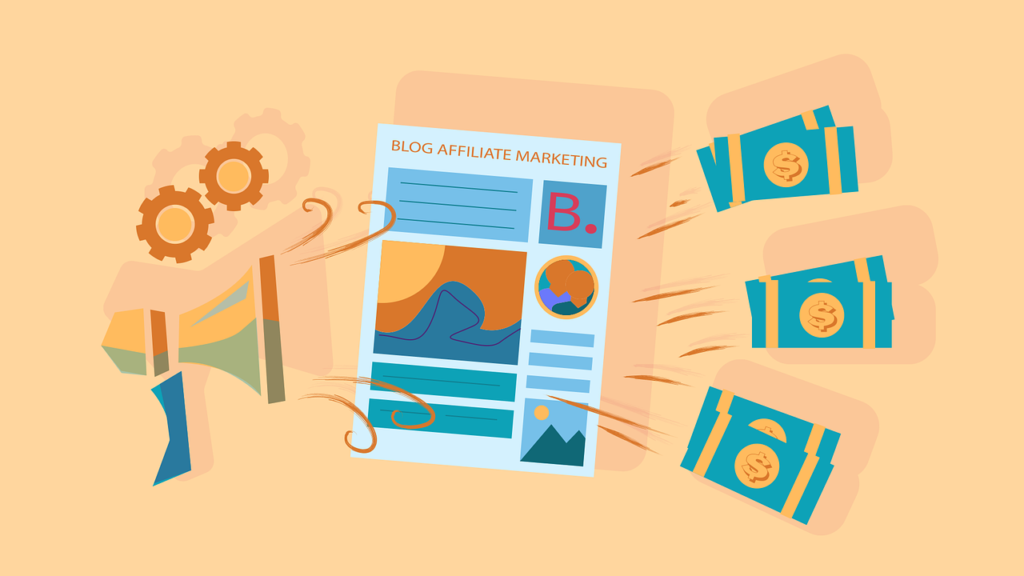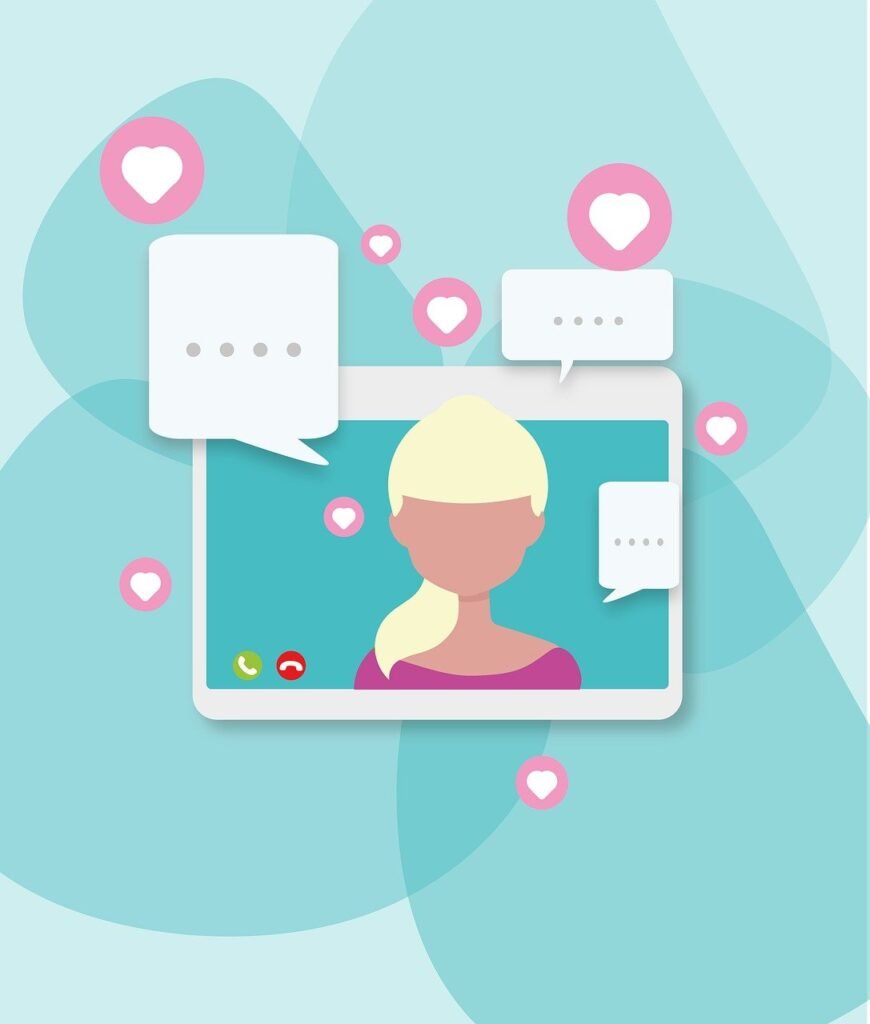In the complex world of B2B sales, understanding how buyers make decisions is essential. The buyer journey isn’t a straight line; it’s a winding path filled with questions, doubts, and countless touchpoints. Each step is influenced by specific pain points and experiences, which shape whether a prospect will choose you or a competitor.
What Is the B2B Buyer Journey?

For startup founders, understanding the B2B buyer journey is more than just theory—it’s a blueprint for scaling your business effectively. This journey encapsulates the decision-making process buyers undertake, but it’s also a mirror reflecting how well your business aligns with market needs. In a startup’s early stages, this alignment is critical because it determines whether you’ll gain traction or struggle to break through.
The B2B buyer journey is not linear. Buyers don’t move seamlessly from one stage to the next. They bounce between awareness, consideration, and decision stages, influenced by external factors like budget constraints, internal team dynamics, and even competitor activity. Recognizing this unpredictability is the first step to building a flexible and responsive strategy.
To craft an effective buyer journey strategy, start by narrowing your focus. In the early stages of your startup, you don’t have the luxury of appealing to every potential buyer. Zero in on your ideal customer profile (ICP). Think about the industries, company sizes, and roles that align with your product or service. The narrower your focus, the more personalized and impactful your approach can be.
Once you’ve defined your target audience, dive deep into their problems. Don’t just think about surface-level issues; dig into the root causes. For example, if you sell workflow automation software, your buyer’s pain point might seem like a desire to save time.
However, the deeper issue could be their struggle to meet tight deadlines, retain staff who are overworked, or scale operations without adding overhead. By addressing these root issues in your messaging and solutions, you position your startup as a must-have rather than a nice-to-have.
The B2B buyer journey also involves multiple decision-makers. Unlike in B2C, where decisions are often made by individuals, B2B deals require the approval of various stakeholders. As a startup, you may feel pressure to win over the person with the final say, such as a CEO or VP.
However, you must also appeal to the people influencing that decision. A financial officer might care about ROI, while an end-user might prioritize ease of use. Mapping the needs and priorities of all stakeholders ensures your message resonates at every level of the decision chain.
Understanding the buyer journey also requires an awareness of the long sales cycles in B2B markets. Startups often underestimate how long it takes for deals to close, which can lead to cash flow challenges and missed opportunities.
To navigate this, build trust early and consistently. Share educational content that showcases your expertise, maintain regular follow-ups without being intrusive, and provide value at every touchpoint. The more credibility you establish, the faster prospects will move through the journey.
Data is your most powerful ally in understanding and refining the B2B buyer journey. Start tracking buyer behaviors from the moment they interact with your brand. Which blog posts are they reading? Which emails do they open? What questions do they ask during demos?
These insights reveal where they are in their journey and what concerns they have. Even if your data sample is small at first, patterns will emerge over time, guiding you to optimize your approach.
Lastly, be prepared to iterate. Buyer behaviors shift due to industry trends, economic factors, and technological advancements. What works today might not work tomorrow. Regularly revisit your buyer journey map to ensure it reflects current realities.
If buyers are dropping off at the consideration stage, you may need to strengthen your case studies or offer more competitive pricing. If they’re stuck in the awareness stage, your content strategy might need a refresh to address emerging pain points.
The Stages of the B2B Buyer Journey

For startup founders, each stage of the B2B buyer journey represents an opportunity to differentiate your business and build lasting relationships. But success depends on more than just understanding the stages—it’s about strategically engaging with buyers at the right moments and addressing their needs in ways that your competitors can’t.
In the awareness stage, buyers aren’t actively looking for your solution; they’re trying to define their problem. Many startups fail here by focusing too much on promoting their product. Instead, position yourself as a guide. Create content and campaigns that educate your audience about the challenges they face, even if those challenges don’t immediately tie back to your offering.
For instance, if your startup offers cybersecurity tools, develop resources that highlight emerging threats or regulatory changes. By doing so, you build trust and demonstrate expertise, making you the go-to resource when the buyer begins searching for solutions.
It’s also crucial to remember that during the awareness stage, buyers aren’t just consuming information passively—they’re forming impressions of your brand. Your tone, design, and messaging should reflect your startup’s unique personality and values.
Authenticity can be a powerful differentiator in crowded markets. If your competitors are using jargon-heavy whitepapers, a simple, relatable blog post might be exactly what resonates with your audience.
In the consideration stage, buyers shift their focus from understanding the problem to evaluating possible solutions. This is where startups need to strike a balance between education and persuasion. Start by mapping out the criteria your ideal customer uses to evaluate solutions.
These criteria often include price, functionality, ease of implementation, and long-term scalability. Address these factors head-on in your marketing materials, such as comparison guides, webinars, and use-case demonstrations.
As a startup, you might not have the brand recognition of larger competitors, but you can use this stage to emphasize your unique advantages. Focus on agility, innovation, and customer-centricity.
Buyers in the consideration stage often feel overwhelmed by the complexity of B2B purchases, so simplicity becomes a competitive advantage. Demonstrate how your solution integrates seamlessly with their existing systems or solves their pain points faster than traditional options.
Another often-overlooked strategy in the consideration stage is fostering peer-to-peer validation. Encourage existing customers to share their success stories through testimonials, case studies, or referrals. For startups, these stories serve as proof that your product works, even if you don’t yet have years of history or thousands of clients to point to. People trust other people, and a genuine endorsement can carry more weight than any polished sales pitch.
The decision stage is where startups face their toughest challenge. Buyers are nearing the finish line but still need reassurance that they’re making the right choice. At this point, objections become your biggest hurdle, and the way you address them can determine whether the deal closes.
Take time to anticipate common objections, such as concerns about pricing, risk, or implementation complexity, and prepare clear, compelling responses. If pricing is a sticking point, for instance, highlight the return on investment or offer flexible payment terms. If implementation seems daunting, provide onboarding resources or free training to ease their concerns.
During the decision stage, your responsiveness and accessibility are critical. Buyers often evaluate not just the product but also the company behind it. Demonstrating that you’re available to answer questions, accommodate custom requests, or even adjust your proposal to meet their needs can set you apart. Small gestures—like a quick follow-up email after a meeting or a thank-you note for their time—can leave a lasting impression.
Finally, startups should focus on creating a frictionless decision-making experience. Review your purchasing process from the buyer’s perspective. Are there unnecessary steps? Is your contract straightforward, or does it include legal jargon that might intimidate buyers? Streamline every aspect of the process to make it as easy as possible for buyers to say yes.
Why Mapping the Journey Matters

For startup founders, mapping the B2B buyer journey isn’t just a nice-to-have exercise; it’s a cornerstone of your growth strategy. Without a clear map of your buyer’s journey, you’re flying blind, relying on guesswork rather than actionable insights to guide your decisions. A detailed understanding of the journey enables you to allocate resources efficiently, refine your messaging, and build a customer experience that fosters trust and drives conversions.
The power of mapping lies in its ability to reveal what your buyers are thinking, feeling, and experiencing at every stage of their decision-making process.
When you map the journey effectively, you identify the moments that matter most—those pivotal interactions where your startup can either win over a prospect or lose them to a competitor. By understanding these critical touchpoints, you can optimize your efforts to create meaningful connections and eliminate friction.
Startup founders often operate with limited resources, making it essential to focus on high-impact areas. Mapping the buyer journey helps you prioritize where to invest your time and energy.
For example, if your analysis reveals that prospects frequently disengage after their first demo, you can refine your presentation, add follow-up resources, or even reconsider how you qualify leads before scheduling demos. Similarly, if prospects often convert after downloading a specific case study, you can amplify its visibility through targeted campaigns or create similar content to replicate its success.
Mapping also allows you to identify gaps in your existing strategy. For startups, it’s easy to overlook certain stages of the buyer journey, especially if you’re eager to push leads toward closing a deal. However, neglecting early stages like awareness and consideration can alienate potential customers who aren’t yet ready to make a decision. By documenting each step of the journey, you ensure no stage is ignored, enabling you to nurture leads effectively and build trust over time.
One strategic advantage of mapping is its ability to uncover bottlenecks that may not be immediately obvious. For instance, if you notice that prospects frequently abandon the journey after visiting your pricing page, it could signal that your pricing model isn’t clearly communicated or perceived as competitive.
By addressing these pain points proactively—such as offering transparent pricing, showcasing ROI, or providing flexible plans—you can remove barriers and keep buyers moving forward.
Mapping also helps you align your sales and marketing efforts, a common challenge for startups. Without alignment, your teams may unintentionally create a fragmented buyer experience, with mixed messages or redundant touchpoints.
A mapped journey serves as a shared framework that keeps everyone on the same page. Your marketing team can focus on generating awareness and nurturing leads, while your sales team picks up where marketing leaves off, engaging prospects with personalized solutions tailored to their stage in the journey.
For startup founders, mapping the journey isn’t just about closing immediate deals; it’s also a tool for long-term relationship building. By understanding and addressing buyer pain points, you demonstrate empathy and earn trust, which translates into loyalty and advocacy. Happy customers are more likely to become brand ambassadors, referring others to your business and expanding your reach without requiring additional acquisition costs.
A well-mapped journey also provides a foundation for data-driven decision-making. By pairing your map with analytics, you can measure the effectiveness of each touchpoint and adjust your strategy in real time.
If an email campaign isn’t driving engagement at the awareness stage, for instance, you can test new subject lines, adjust the content, or target a different audience segment. Over time, this iterative approach helps you fine-tune your strategy and maximize the ROI of your efforts.
Mapping B2B Buyer Touchpoints

Where the Magic Happens
For startup founders, mapping B2B buyer touchpoints is not just a tactical exercise but a strategic imperative. Each interaction between your brand and a potential buyer—whether digital, physical, or interpersonal—carries the potential to build trust, provide value, and nudge the prospect closer to a purchase decision.
However, the true power of touchpoint mapping lies in using it to create a seamless, personalized journey that aligns with your buyer’s expectations while showcasing your startup’s unique value proposition.
The first step in mapping touchpoints is understanding that they don’t exist in isolation. Buyers encounter your brand in a multitude of ways, from stumbling upon your LinkedIn post to having an in-depth call with your sales team.
These moments connect to form an overarching narrative about your company. Your task as a startup founder is to ensure that this narrative is cohesive, engaging, and aligned with the buyer’s needs at each stage of the journey.
Startup founders often make the mistake of focusing solely on their website or sales interactions as key touchpoints. While these are critical, it’s essential to consider the entire ecosystem where buyers might engage with your brand. For example, your social media presence might be the first place a potential buyer encounters your business. A lackluster or inconsistent presence can erode trust before the buyer even lands on your website.
Similarly, third-party channels such as industry forums, review sites, or podcasts featuring your team can serve as powerful touchpoints, especially during the awareness stage. By actively monitoring and contributing to these spaces, you can ensure your startup remains top-of-mind in relevant conversations.
To map touchpoints effectively, startup founders should put themselves in the buyer’s shoes. Imagine what a typical day looks like for your target buyer. When do they search for solutions like yours? What platforms do they use to gather information?
Are they likely to engage with formal content like webinars, or do they prefer informal interactions like Q&A sessions on LinkedIn? These insights can help you identify where your brand needs to be present and how to tailor your approach for maximum impact.
One of the most strategic actions you can take as a founder is to optimize the transition between touchpoints. For instance, if a buyer downloads a whitepaper from your website, what happens next? Does your email follow-up feel personalized and helpful, or does it come across as generic and sales-driven?
If a prospect attends a product demo, is there a clear next step to maintain momentum, such as a follow-up call or additional resources tailored to their specific concerns? By smoothing these transitions, you reduce friction and create a sense of continuity that encourages buyers to keep engaging with your brand.
Startup founders also need to prioritize consistency across touchpoints. Buyers often interact with multiple members of your team and various pieces of content before making a decision. If your messaging or tone varies wildly between your website, emails, and sales calls, it creates confusion and diminishes trust.
Create a brand playbook that defines your startup’s voice, key messages, and unique selling points, ensuring every touchpoint reinforces the same core narrative. This consistency not only builds trust but also makes your startup more memorable in a crowded marketplace.
The use of data is another critical element in mapping and optimizing touchpoints. For startups, resources are often tight, so you need to focus on the touchpoints that drive the most impact. Use analytics to track buyer behavior at each interaction.
If you notice high engagement with blog content but low conversion rates, it might indicate a need for stronger calls-to-action or better alignment between content and next steps. Similarly, tracking how buyers respond to sales outreach can reveal whether your messaging resonates or requires adjustment. Over time, these insights allow you to fine-tune your touchpoints and maximize their effectiveness.
Touchpoint mapping also provides an opportunity to create unexpected moments of delight. For example, a simple handwritten thank-you note after a demo or an invitation to a tailored workshop can leave a lasting impression. These small, thoughtful gestures help humanize your brand and differentiate your startup from competitors who may rely solely on automated interactions.
Common B2B Buyer Touchpoints

For startup founders, understanding the common touchpoints in the B2B buyer journey isn’t just about knowing where your prospects are interacting with your brand—it’s about strategically leveraging those moments to build trust, establish authority, and drive action.
Each touchpoint is an opportunity to differentiate your startup in a competitive market, and how you manage these interactions can be the difference between gaining a loyal customer and losing a prospect to a competitor.
Your website remains one of the most crucial touchpoints, but it’s more than just a digital storefront. It’s the hub where buyers evaluate not only your product or service but also your credibility. Startup founders should view their website as a tool for storytelling. Beyond providing product information, the website should articulate the unique value your startup brings to the table.
Use every page strategically, from showcasing customer testimonials on the homepage to embedding dynamic content like ROI calculators on your product pages. The goal is to move buyers closer to a decision while providing a seamless user experience. Pay special attention to analytics to identify pages with high bounce rates and optimize them for clarity and engagement.
Social media has grown into a vital touchpoint in the B2B space, particularly for startups looking to establish authority in their niche. Platforms like LinkedIn aren’t just for posting updates—they’re for initiating meaningful conversations with your audience. Instead of broadcasting generic messages, use social media to share actionable insights, engage in industry discussions, and amplify customer success stories.
Personal interactions can make your startup memorable in a crowded feed. Respond to comments thoughtfully, acknowledge mentions, and participate in trending discussions relevant to your industry. This not only increases your visibility but also positions your brand as approachable and authentic.
Content assets are another key touchpoint that buyers engage with as they move through the awareness and consideration stages. Founders should think beyond the usual whitepapers and blogs. Consider creating highly targeted content like niche case studies, industry-specific benchmarks, or interactive tools.
For example, if your startup serves the HR tech industry, an interactive tool that calculates potential cost savings through automation could be a game-changer. Make these assets accessible but also part of a larger engagement strategy. If someone downloads a whitepaper, follow up with an email offering related resources or an invitation to a webinar. This creates a natural progression for buyers to stay engaged with your brand.
Live interactions, such as product demos or sales calls, are pivotal touchpoints that often determine whether a deal will move forward. For startups, these moments are opportunities to shine by showcasing not only the product but also your team’s expertise and passion.
Prepare thoroughly for these interactions by understanding the prospect’s specific challenges and tailoring your pitch accordingly. Instead of running through a generic demo, make it as personalized as possible. Address their pain points directly, share relevant examples, and ask thoughtful questions that show you’ve done your homework. Buyers appreciate when startups invest time in understanding their unique needs.
Reviews and testimonials are often overlooked as touchpoints, but they are critical in the decision-making stage. Buyers trust third-party validation more than your marketing materials. Encourage happy customers to leave reviews on platforms like G2, Capterra, or even LinkedIn.
As a startup founder, take an active role in collecting and showcasing testimonials that highlight specific outcomes your product has achieved. For instance, instead of a vague endorsement, aim for testimonials that quantify results, such as “We reduced onboarding time by 40% after using [Your Product].” These concrete examples help prospects envision the value your solution can bring.
Email communication is another powerful touchpoint, but its impact depends on how well it’s executed. Generic, one-size-fits-all campaigns won’t resonate in the B2B world. Segment your email list based on where prospects are in their journey and their specific interests.
For instance, if a lead has engaged with content about scaling operations, send them an email with additional resources on that topic, followed by an invitation to a webinar featuring success stories from companies similar to theirs. Email touchpoints should feel like a continuation of the conversation rather than standalone messages, reinforcing your understanding of the buyer’s needs.
Startup founders should also pay attention to offline touchpoints, particularly for high-value prospects. Industry events, trade shows, and networking meetups can be powerful opportunities to make personal connections. Use these moments to deepen relationships by listening more than you talk.
Prospects are more likely to remember a meaningful conversation than a sales pitch. If face-to-face meetings aren’t possible, consider creative virtual touchpoints, such as hosting exclusive roundtables or personalized product walkthroughs over video calls.

Conclusion
Understanding the B2B buyer journey is more than a theoretical exercise—it’s the foundation for building a scalable, sustainable, and customer-centric business. For startup founders, this journey offers invaluable insights into what your buyers truly need, how they interact with your brand, and where you can make the biggest impact.
By strategically mapping touchpoints, addressing pain points, and aligning your messaging with each stage of the journey, you position your startup as not just a solution provider but a trusted partner.




















